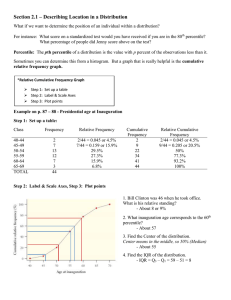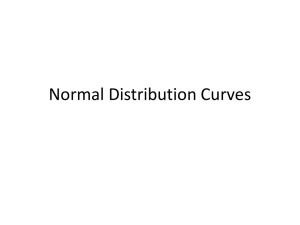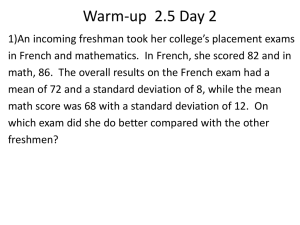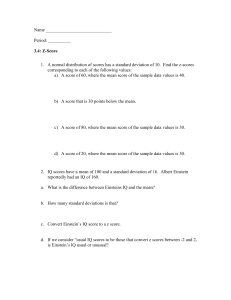Measuring Relative Standing
advertisement
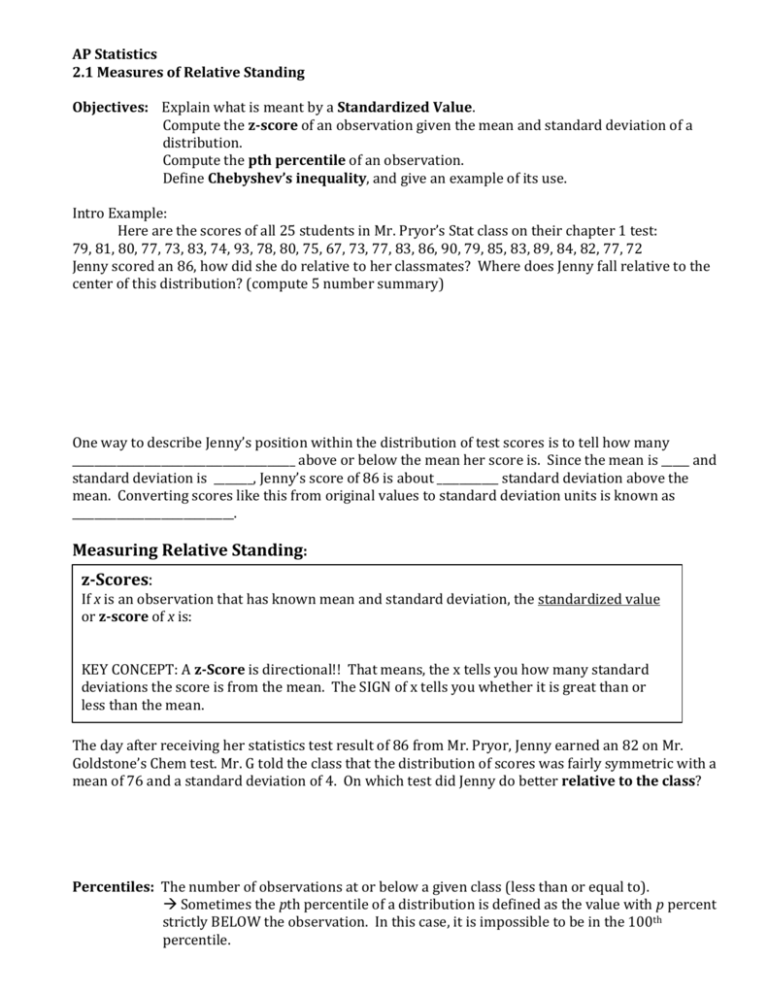
AP Statistics 2.1 Measures of Relative Standing Objectives: Explain what is meant by a Standardized Value. Compute the z-score of an observation given the mean and standard deviation of a distribution. Compute the pth percentile of an observation. Define Chebyshev’s inequality, and give an example of its use. Intro Example: Here are the scores of all 25 students in Mr. Pryor’s Stat class on their chapter 1 test: 79, 81, 80, 77, 73, 83, 74, 93, 78, 80, 75, 67, 73, 77, 83, 86, 90, 79, 85, 83, 89, 84, 82, 77, 72 Jenny scored an 86, how did she do relative to her classmates? Where does Jenny fall relative to the center of this distribution? (compute 5 number summary) One way to describe Jenny’s position within the distribution of test scores is to tell how many ________________________________________ above or below the mean her score is. Since the mean is _____ and standard deviation is _______, Jenny’s score of 86 is about ___________ standard deviation above the mean. Converting scores like this from original values to standard deviation units is known as _____________________________. Measuring Relative Standing: z-Scores: If x is an observation that has known mean and standard deviation, the standardized value or z-score of x is: KEY CONCEPT: A z-Score is directional!! That means, the x tells you how many standard deviations the score is from the mean. The SIGN of x tells you whether it is great than or less than the mean. The day after receiving her statistics test result of 86 from Mr. Pryor, Jenny earned an 82 on Mr. Goldstone’s Chem test. Mr. G told the class that the distribution of scores was fairly symmetric with a mean of 76 and a standard deviation of 4. On which test did Jenny do better relative to the class? Percentiles: The number of observations at or below a given class (less than or equal to). Sometimes the pth percentile of a distribution is defined as the value with p percent strictly BELOW the observation. In this case, it is impossible to be in the 100th percentile. We can also describe Jenny’s performance on her first stat test using percentiles. Using the stemplot from page 116, we can see the Jenny’s 86 is the 22nd highest score on this test. Since 22 of the 25 observations (88%) are at or below her score; Jenny scored at the 88th percentile. (See pg.119Example 2.3 for another example) Chebyshev’s Inequality: (This concept is not on the AP Syllabus, but you are free to use this appropriately on the open-ended section of the exam) In ANY distribution (regardless of shape), the percent of observations falling within k standard deviations of the mean is AT LEAST: Example: If k = 2 Read: k at least (100) (1 − Example 2.5 (pg 121) 1 𝑘2 ) of observations within k standard deviations of mean. Example 2.16 (pg 131) HW: pg. 118; 2.1 – 2.4 pg. 121; 2.7, 2.8

